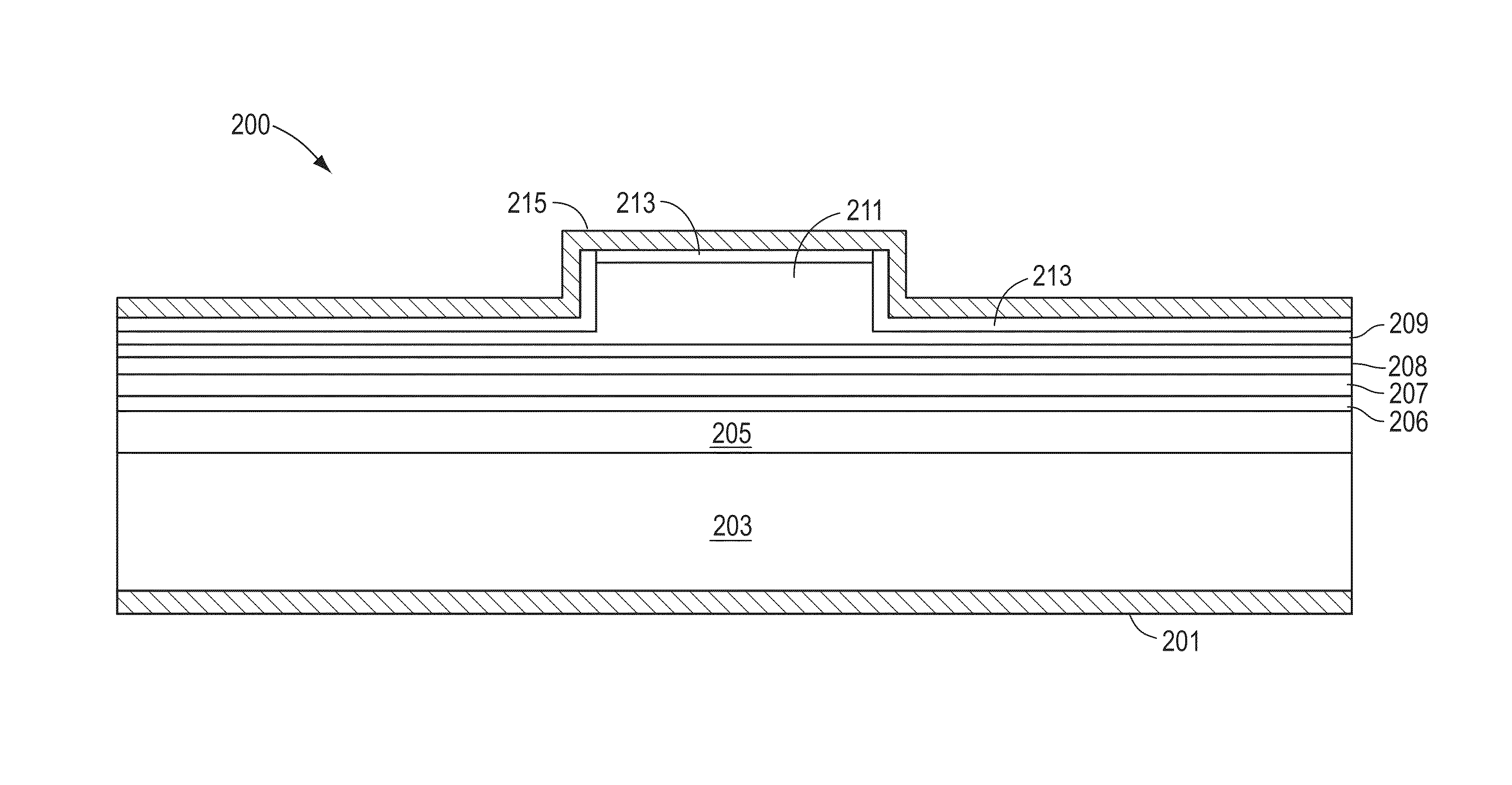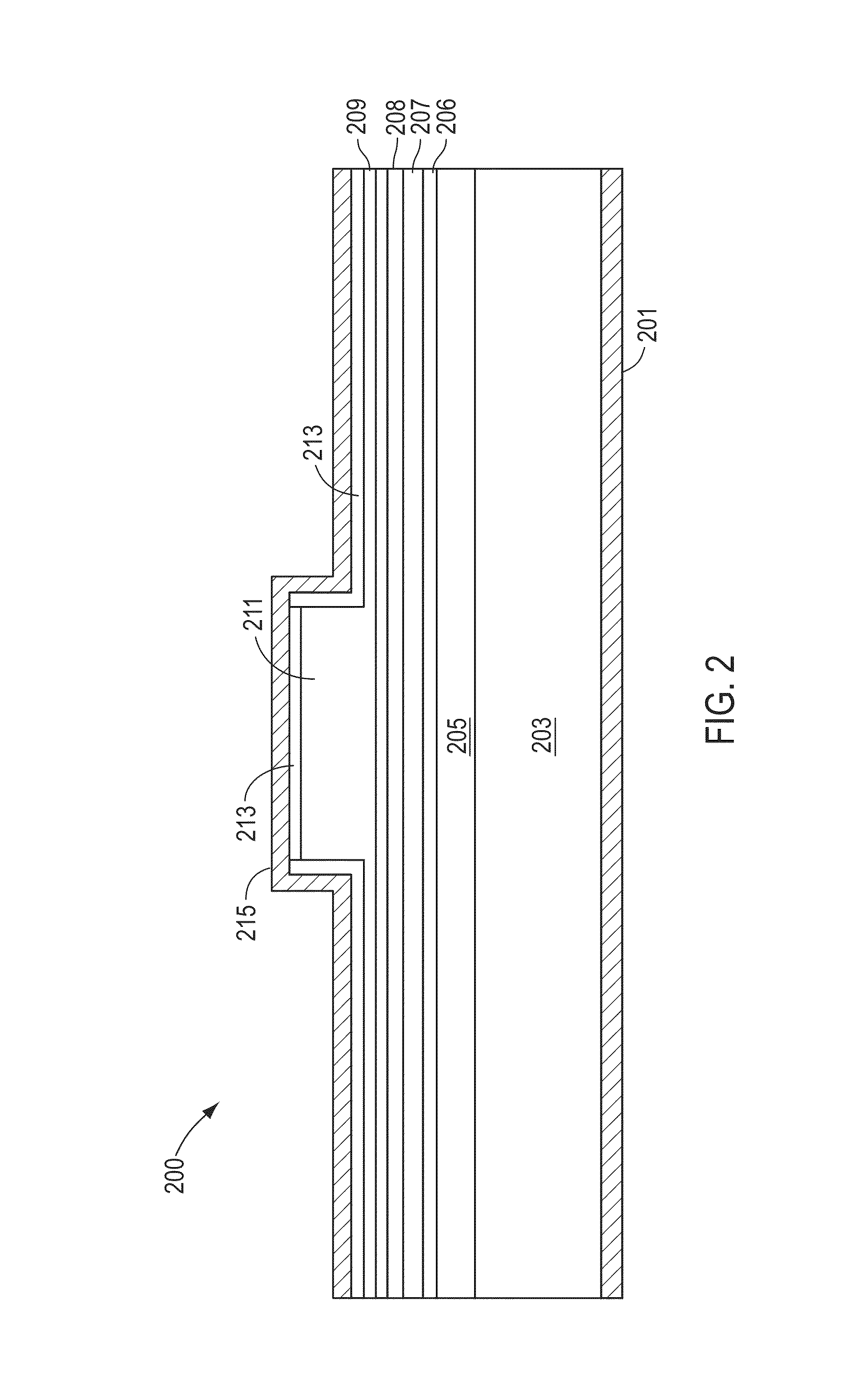Optical device structure using GaN substrates for laser applications
a technology of optical devices and substrates, applied in the direction of lasers, semiconductor laser structural details, semiconductor lasers, etc., can solve the problems of high cost, large size, weight, and cost of conventional light bulbs, and achieve the effects of improving device performance, simple and cost effective, and reducing the cost of lasers
- Summary
- Abstract
- Description
- Claims
- Application Information
AI Technical Summary
Benefits of technology
Problems solved by technology
Method used
Image
Examples
examples
[0094]FIG. 13 is a simplified diagram illustrating a laser device according to one or more examples of the present invention. This diagram is merely an illustration and should not unduly limit the scope of the claims herein. One of ordinary skill in the art would recognize other variations, modifications, and alternatives. In this example, the optical device includes a gallium nitride substrate member having a nonpolar crystalline surface region characterized by an orientation of about + / −1 degree towards (0001) and less than about 0.3 degrees towards (11-20). The bulk GaN substrate has a surface dislocation density below 1E5 to 1E7 cm-2 or about 1E6 cm−2 and a surface roughness of less than 0.2 nm.
[0095]The device has a laser stripe region formed overlying a portion of the nonpolar crystalline orientation surface region. The laser stripe region is characterized by a cavity orientation is substantially parallel to the c-direction and has a first end and a second end. The device has ...
PUM
 Login to View More
Login to View More Abstract
Description
Claims
Application Information
 Login to View More
Login to View More - R&D
- Intellectual Property
- Life Sciences
- Materials
- Tech Scout
- Unparalleled Data Quality
- Higher Quality Content
- 60% Fewer Hallucinations
Browse by: Latest US Patents, China's latest patents, Technical Efficacy Thesaurus, Application Domain, Technology Topic, Popular Technical Reports.
© 2025 PatSnap. All rights reserved.Legal|Privacy policy|Modern Slavery Act Transparency Statement|Sitemap|About US| Contact US: help@patsnap.com



